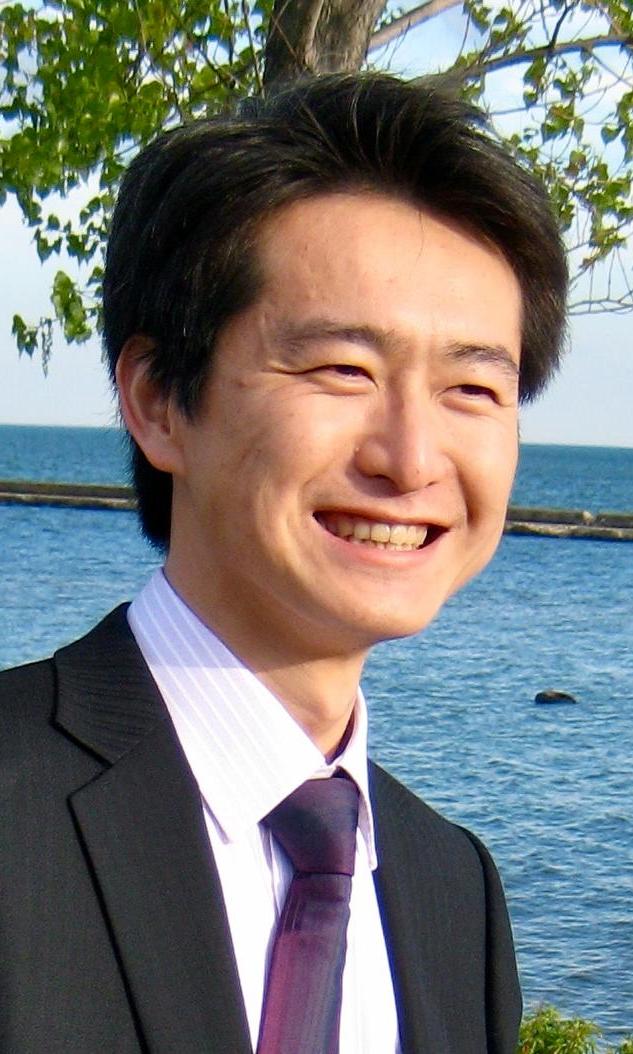Org. Synth. 2010, 87, 310
DOI: 10.15227/orgsyn.087.0310
SYNTHESIS OF CHIRAL PYRIDINE BIS(OXAZOLINE) LIGANDS FOR NICKEL-CATALYZED ASYMMETRIC NEGISHI CROSS-COUPLINGS OF SECONDARY ALLYLIC CHLORIDES WITH ALKYLZINCS: 2,6-BIS[(4R)-4,5-DIHYDRO-4- (2-PHENYLETHYL)-2-OXAZOLYL]- PYRIDINE
[Pyridine, 2,6-bis[(4R)-4,5-dihydro-4-(2-phenylethyl)-2-oxazolyl]-]
Submitted by Sha Lou and Gregory C. Fu
1.
Checked by Gavin Chit Tsui, David I. Chai, and Mark Lautens.
1. Procedure
A. (R)-2-Amino-4-phenylbutan-1-ol (1). An oven-dried, 500-mL, two-necked, round-bottomed flask equipped with a condenser fitted with an argon inlet and a magnetic stir bar (31.8 × 15.9 mm, egg-shaped) is purged with argon for 10 min. Anhydrous THF
(200 mL) (Note 1) is added into the flask by syringe through the open neck under a positive pressure of argon. Lithium aluminum hydride (4.56 g, 120 mmol, 1.50 equiv) (Note 2) is added over 5 min through the open neck under a positive pressure of argon. The solution is stirred at rt for 5 min, and then D-homophenylalanine ethyl ester hydrochloride (19.5 g, 80.0 mmol, 1.00 equiv) (Note 3) is added in portions (500 mg per portion) over 30 min through the open neck under a positive pressure of argon, during which time the solution gently refluxes. Upon the completion of the addition, the open neck is capped with a glass stopper, and the heterogeneous gray reaction mixture is heated at reflux in an oil bath for 24 h. Next, the mixture is allowed to cool to rt, THF
(100 mL) is added by syringe, and the solution is cooled to 0 °C in an ice bath. Water
(10 mL) is added dropwise by syringe through the condenser over 30 min (Note 4), and then a solution of NaOH (2.5 M, 20 mL) is added in one portion. The resulting mixture is heated at reflux for 20 min until the color of the precipitate changes from gray to white. The warm solution (approx 60-70 °C) is filtered through a Büchner funnel that contains a bed of celite (1.0 cm height), and the precipitate is washed with warm THF
(100 mL). The filtrate is concentrated under reduced pressure (20 mmHg) to remove the THF and most of the water. The residue is dried azeotropically with toluene (two 50-mL portions) by rotary evaporation (20 mmHg) and then under vacuum (10 mmHg) for 6 h, which yields the desired β-amino alcohol 1 as an off-white solid (12.7-13.1 g, 96-99% yield) (Note 5) that is used in the next step without further purification.
B. 2,6-Bis[(4R)-4,5-dihydro-4-(2-phenylethyl)-2-oxazolyl]pyridine (2). (Note 6) An oven-dried, 250-mL, two-necked, round-bottomed flask equipped with a condenser fitted with an argon inlet and a magnetic stirbar (31.8 × 15.9 mm, egg-shaped) is purged with argon for 10 min. 2,6-Pyridinedicarbonitrile (2.58 g, 19.4 mmol, 1.00 equiv) (Note 7), anhydrous toluene (140 mL; added by syringe) (Note 8), and zinc trifluoromethanesulfonate (368 mg, 0.99 mmol, 0.051 equiv) (Note 9) are added through the open neck under a positive pressure of argon, the open neck is capped with a glass stopper, and the mixture is stirred at rt for 5 min. (R)-2-Amino-4-phenylbutan-1-ol (1) (7.64 g, 43.5 mmol, 2.24 equiv) is added through the open neck under a positive pressure of argon, the open neck is capped with a glass stopper, and the reaction mixture is heated at reflux in an oil bath for 24 h. Next, the reaction mixture is allowed to cool to rt and diluted with ethyl acetate
(300 mL). The solution is washed with a saturated aqueous solution of NaHCO3
(200 mL) and brine
(200 mL), and then it is dried over anhydrous MgSO4 (20 g) and filtered through a Büchner funnel that contains a bed of celite (1.0 cm height). The filtrate is concentrated under reduced pressure on a rotary evaporator (20 mmHg), and the residue is purified by column chromatography on SiO2 (5 cm diameter × 20 cm height), eluting with ethyl acetate:hexanes:Et3N (1:1:0.02) (Note 10), which affords the desired pyridine derivative 2 (6.18 g, 75% yield, >99% ee) as a white solid (Notes 11 and 12).
2. Notes
1.
THF was distilled from Na/benzophenone ketyl. Submitters used THF (99+%) that was purchased from J.T. Baker (water content: 24 ppm) and purified by passage through activated alumina under argon.
2.
Lithium aluminum hydride (97%) was purchased from Alfa Aesar and used as received.
3.
D-Homophenylalanine ethyl ester hydrochloride (≥98%) was purchased from Fluka and used as received.
4.
Quenching excess lithium aluminum hydride with water is a highly exothermic process that produces H
2. Dropwise addition of water is recommended, and care should be taken to efficiently cool and stir the reaction mixture. The quenching should be conducted in an efficient fume hood in order to safely vent the H
2 gas.
5.
The purity of compound
1 (94%) was determined by HPLC analysis (t
r = 1.65 min) with an Agilent 1100 Series HPLC system equipped with an Eclipse XDB-C18 column (length 150 mm, I.D. 4.6 mm, particle size 5 μm), using 98% MeOH/(0.2% AcOH in water) for 6 min, with a flow rate of 0.8 mL/min. Compound
1can be purified via column chromatography on SiO
2, eluting with MeOH:CH
2Cl
2:Et
3N (5:95:2): R
f = 0.4 (MeOH:CH
2Cl
2; 1:9). Compound
1 has the following physical properties: Mp 38-40 °C; [a]
27D −1.2 (
c 1.0, CHCl
3); IR (film) 3349, 2924, 1601, 1497, 1454, 1367, 1057, 748, 698 cm
-1;
1H NMR
pdf (CDCl
3, 400 MHz) δ: 1.54-1.60 (m, 1 H), 1.71-1.77 (m, 1 H), 1.92 (br s, 3 H), 2.61-2.66 (m, 1 H), 2.70-2.76 (m, 1 H), 2.82-2.86 (m, 1 H), 3.31 (dd,
J = 10.5, 7.5 Hz, 1 H), 3.58 (dd,
J = 10.5, 3.5 Hz, 1 H), 7.16-7.18 (m, 3 H), 7.26-7.30 (m, 2 H);
13C NMR
pdf (CDCl
3, 100 MHz) δ: 32.4, 36.0, 52.3, 66.5, 125.9, 128.2, 128.4, 141.7; HRMS (ESI)
m/z calcd. for C
10H
16NO ([M+H]
+) 166.1226; found 166.1233.
6.
2,6-Bis[(4S)-4,5-dihydro-4-(2-phenylethyl)-2-oxazolyl]pyridine (97%) is available from Aldrich.
7.
2,6-Pyridinedicarbonitrile (97%) was purchased from Aldrich and used as received.
8.
Toluene was distilled from sodium. Submitters used toluene (99+%) that was purchased from J.T. Baker (water content: <0.01%) and purified by passage through activated alumina under argon.
9.
Zinc trifluoromethanesulfonate (98%) was purchased from Strem and used as received.
10.
Column chromatography was performed on Silicycle 60 Å silica gel. Submitters used Sorbent Technologies 60 Å silica gel.
11.
On half-scale runs using 1.29 g of the starting 2,6-pyridinedicarbonitrile (97%), 2.83-2.88 g of the product was obtained (69-70% yield). On full-scale runs, submitters obtained 6.89-7.06 g of the product (81-83% yield). By conducting the reaction with anhydrous zinc chloride as the catalyst (10%) and chlorobenzene as the solvent at 120 °C for 24 h, the pybox ligand can be generated in comparable yield.
212.
Compound
2 has the following properties: R
f = 0.13 (ethyl acetate:hexanes:Et
3N, 1:1:0.02); Mp 87-89 °C; [α]
26D +163 (
c 1.15, CHCl
3); IR (film) 3437, 2924, 1643, 1574, 1497, 1454, 1358, 1246, 1161, 1107, 1072, 976, 910, 748, 702 cm
-1;
1H NMR
pdf (CDCl
3, 400 MHz) δ: 1.90-1.96 (m, 2 H), 2.05-2.11 (m, 2 H), 2.73-2.89 (m, 4 H), 4.16 (t,
J = 8.5 Hz, 2 H), 4.33-4.39 (m, 2 H), 4.59 (t,
J = 8.5 Hz, 2 H), 7.20-7.31 (m, 10 H), 7.89 (t,
J = 7.9 Hz, 1 H), 8.21 (d,
J = 7.9 Hz, 2 H);
13C NMR
pdf (CDCl
3, 100 MHz) δ: 32.3, 37.5, 66.4, 73.1, 125.7, 125.9, 128.4 (2), 137.2, 141.4, 146.8, 162.3; HRMS (EI)
m/z calcd. for C
27H
27N
3O
2 ([M]
+) 425.2103; found 425.2111. The enantiomeric excess of
2 was determined on an Agilent 1100 Series HPLC system: Chiralcel OD-H column (length 250 mm, I.D. 4.6 mm); solvent system: 20%
iPrOH, 1.5 mL/min; retention time: 53.9 min.
Safety and Waste Disposal Information All hazardous materials should be handled and disposed of in accordance with "Prudent Practices in the Laboratory"; National Academy Press; Washington, DC, 1995.
3. Discussion
Chiral pyridine-2,6-bisoxazolines (pybox) form tridentate complexes with a variety of metals, and they have proved to be highly effective ligands in asymmetric catalysis.
3 We have reported several examples of enantioselective Negishi cross-couplings of secondary alkyl halides with organozinc reagents that are catalyzed by Ni/pybox complexes.
4,5 When α-bromo amides
4a and benzylic bromides
4b are employed as electrophiles, commercially available
i-Pr-Pybox is the ligand of choice. However, for Negishi couplings of allylic chlorides, CH
2CH
2Ph-pybox is the optimal ligand from the standpoints of enantioselectivity and yield.
4c Herein, we describe a procedure for the synthesis of CH
2CH
2Ph-pybox.
The procedure is based on a general route developed by Pires and coworkers.
6 (
R)- and (
S)-2-Amino-4-phenylbutan-1-ol are readily available by reduction of homophenylalanine or an ester derivative.
Appendix
Chemical Abstracts Nomenclature (Collective Index Number);
(Registry Number)
L-Homophenylalanine: Benzenebutanoic acid, a-amino-, (aS)-; (943-73-7)
D-Homophenylalanine ethyl ester hydrochloride: Benzenebutanoic acid, a-amino-, ethyl ester, hydrochloride (1:1), (aR)-; (90940-54-8)
Lithium aluminum hydride: Aluminate(1-), tetrahydro-, lithium (1:1), (T-4)-; (16853-85-3)
(S)-2-Amino-4-phenylbutan-1-ol: Benzenebutanol, ß-amino-, (ßS)-; (27038-09-1)
(R)-2-Amino-4-phenylbutan-1-ol: Benzenebutanol, ß-amino-, (ßR)-; (761373-40-4)
2,6-Pyridinedicarbonitrile; (2893-33-6)
Zinc trifluoromethanesulfonate: Methanesulfonic acid, 1,1,1-trifluoro-, zinc salt (2:1); (54010-75-2)
2,6-Bis[(4R)-4,5-dihydro-4-(2-phenylethyl)-2-oxazolyl]pyridine: Pyridine, 2,6-bis[(4R)-4,5-dihydro-4-(2-phenylethyl)-2-oxa zolyl]-
 |
Prof. Greg Fu was born in Galion, Ohio, in 1963. He received a B.S. degree in 1985 from MIT, where he worked in the laboratory of Prof. K. Barry Sharpless. After earning a Ph.D. from Harvard in 1991 under the guidance of Prof. David A. Evans, he spent two years as a postdoctoral fellow with Prof. Robert H. Grubbs at Caltech. In 1993, he returned to MIT, where he is currently the Firmenich Professor of Chemistry. Prof. Fu received the Springer Award in Organometallic Chemistry in 2001, the Corey Award of the American Chemical Society in 2004, and the Mukaiyama Award of the Society of Synthetic Organic Chemistry of Japan in 2006. He is a fellow of the Royal Society of Chemistry and of the American Academy of Arts and Sciences. Prof. Fu serves as an associate editor of the Journal of the American Chemical Society.His current research interests include metal-catalyzed coupling reactions, chiral-ligand design, and enantioselective nucleophilic catalysis. |
 |
Sha Lou was born in He Bei, China, in 1979. He received a B.S. in Chemistry from Beijing University of Chemical Technology in 2002, where he conducted undergraduate research on fullerene functionalizations with Professor Shenyi Yu. He obtained a Ph.D. degree in January 2008 from Boston University under the direction of Professor Scott E. Schaus. His graduate research focused on transition metal- and organic molecule-catalyzed asymmetric carbon-carbon bond-forming reactions and synthesis. In 2008, he joined the group of Professor Greg Fu at MIT as a postdoctoral fellow. His current research involves the development of transition metal-catalyzed enantioselective cross-coupling reactions. |
 |
Gavin Chit Tsui was born in China and raised in Hong Kong. He obtained his Hon. B. Sc. (2004) and M. Sc. (2006, supervisor: Prof. William Tam) degrees from the University of Guelph, Ontario, Canada. He then joined pharmaceutical companies (NPS Pharmaceuticals, Inc. and Merck Frosst Canada) as a research chemist in the medicinal chemistry division. Currently he is pursuing a Ph. D. degree at the University of Toronto under the supervision of Prof. Mark Lautens to investigate novel rhodium-catalyzed reactions. |
Copyright © 1921-, Organic Syntheses, Inc. All Rights Reserved